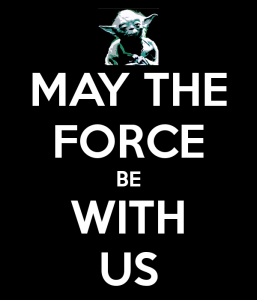When we think about invisible entities or forces and use them to explain events, we are theorizing. We are postulating, in other words, an underlying or overarching order which can account for change in the space-time world. This is a functional feature of theory, regardless of content. This content, whether classed as religious or scientific, is at bottom cosmological. There is always an ordering vision of the cosmos which orients and anchors the theory.
In both the religious and scientific theoretical cases, there are pronounced tendencies toward teleology. This is because no matter how energetic or chaotic things may be at any particular time or in any particular place, the event subsides or resolves into a steadier state. It’s almost as if there is an apparent resolution. When we witness such movements, it’s hard not to think the invisibles, whether entities or forces, are “responsible.” Simply putting things this way shows how difficult it is to depersonalize the hidden. The teleological force is strong in all of us.
While writing the preceding paragraphs, my coffee has gotten cold. How and why did this happen? According to this Quanta story, it’s all due to quantum entanglement:
“Finally, we can understand why a cup of coffee equilibrates in a room,” said Tony Short, a quantum physicist at Bristol. “Entanglement builds up between the state of the coffee cup and the state of the room.” The tendency of coffee — and everything else — to reach equilibrium is “very intuitive,” said Nicolas Brunner, a quantum physicist at the University of Geneva. “But when it comes to explaining why it happens, this is the first time it has been derived on firm grounds by considering a microscopic theory.”
This is a fascinating example of the hidden or invisible at work. Perhaps even more fascinating is the idea that this entanglement is an “informational” exchange characterized by increased correlations or order:
Using an obscure approach to quantum mechanics that treated units of information as its basic building blocks, Lloyd spent several years studying the evolution of particles in terms of shuffling 1s and 0s. He found that as the particles became increasingly entangled with one another, the information that originally described them (a “1” for clockwise spin and a “0” for counterclockwise, for example) would shift to describe the system of entangled particles as a whole. It was as though the particles gradually lost their individual autonomy and became pawns of the collective state. Eventually, the correlations contained all the information, and the individual particles contained none. At that point, Lloyd discovered, particles arrived at a state of equilibrium, and their states stopped changing, like coffee that has cooled to room temperature. “What’s really going on is things are becoming more correlated with each other,” Lloyd recalls realizing. “The arrow of time is an arrow of increasing correlations.”
While I appreciate this teleological explanation for my cold coffee, I am not sure that movement toward equilibrium in space implicates “time.” Most physicists consider time to be an illusion that arises due to human perception and placement in space. I don’t know what time is, though I do know that not all humans construct and thus experience it the same way. Traditional Aboriginals, for instance, subordinated time to space and construed space as encapsulating the past, present, and future simultaneously. Ironically, physicist Lee Smolin argues the exact opposite to reach the same ontological result. He contends that time is fundamental and space is illusory:
For Smolin, the key to salvaging time turns out to be eliminating space. Whereas time is a fundamental property of nature, space, he believes, is an emergent property. It is like temperature: apparent, measurable, but actually a consequence of something deeper and invisible—in the case of temperature, the microscopic motion of ensembles of molecules. Temperature is an average of their energy. It is always an approximation, and therefore, in a way, an illusion. So it is with space for Smolin: “Space, at the quantum-mechanical level, is not fundamental at all but emergent from a deeper order”—an order, as we will see, of connections, relationships. He also believes that quantum mechanics itself, with all its puzzles and paradoxes (“cats that are both alive and dead, an infinitude of simultaneously existing universes”), will turn out to be an approximation of a deeper theory.
For space, the deeper reality is a network of relationships. Things are related to other things; they are connected, and it is the relationships that define space rather than the other way around. This is a venerable notion: Smolin traces the idea of a relational world back to Newton’s great rival, Gottfried Wilhelm Leibniz: “Space is nothing else, but That Order or Relation; and is nothing at all without Bodies, but the Possibility of placing them.” Nothing useful came of that, while Newton’s contrary view—that space exists independently of the objects it contains—made a revolution in the ability of science to predict and control the world. But the relational theory has some enduring appeal; some scientists and philosophers such as Smolin have been trying to revive it.
If that is not enough to bend your mind for one day, in this recent Aeon piece we have a systems chemist teleologically explaining why “life resists disorder.” This is the sort of (scientific) speculation that speaks to the human need to theorize or impose order on apparent chaos. It’s magical.


